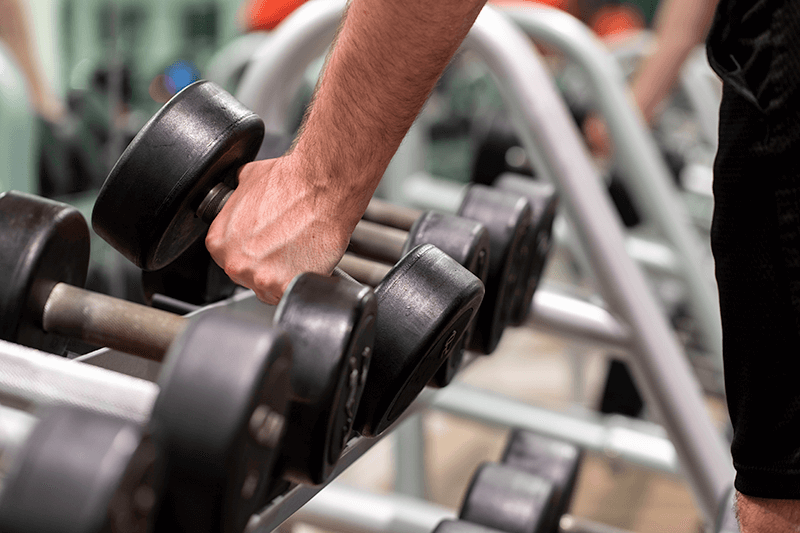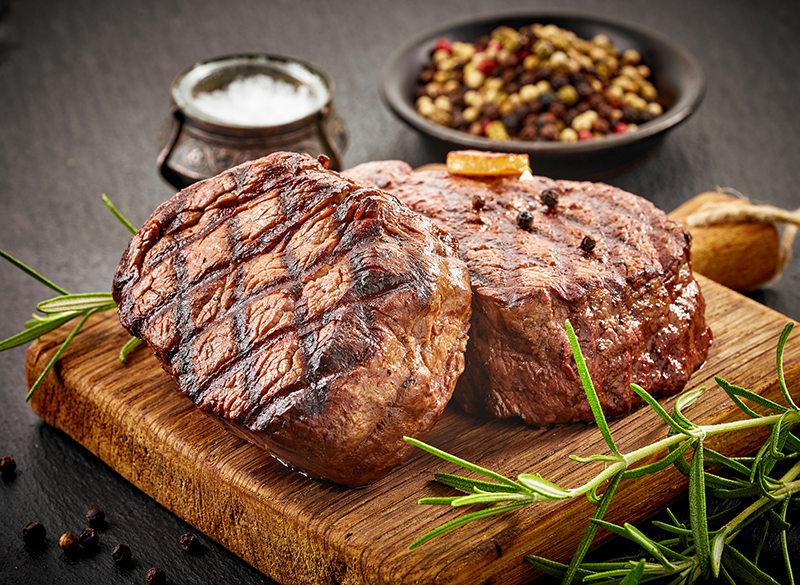Shopping Bag
8 Proven Routines To Fix Your Patchy Beard (Backed By Research)
Beard lovers know the pains of having a patchy beard. You can either embrace the patchy look and make it a statement look, or take the time to fix it. There are multiple causes for patchy beards, like genetic factors, hormone levels, medical conditions, or just having a stressful life and not getting enough sleep.
Although there is no end-all solution to fixing patchy beard hair, we have some helpful tips and tricks that can help if you want to learn how to fix a patchy beard.
Sometimes all you need to do is change your routine a bit. Getting enough sleep, eating a balanced diet, or working out can have positive effects when it comes to beard growth by boosting your hormone levels and maintaining your general health.
Other fixes come in the form of care products, medication, or the treatment of underlying afflictions such as the infamous Alopecia Areata. Whatever the cause, there are ways to conquer patchy beards. Read on to find out more.

What causes patchy beard growth?
Patchy beard growth is a thing many men struggle with. It is especially common in the first stages of beard growth, even if it fills in over time. But sometimes your facial hair stubbornly refuses to grow. There are many ways to work around this.
For example, choosing a beard style that emphasizes the fuller part of the beard or covering the patchy areas with longer beard hairs may create the appearance of a rich beard. The problem with these approaches is the fact that sometimes the patchiness is asymmetrical, which makes it difficult to style.
If you’re looking for ways to fix your patchy beard there are many solutions out there, but it’s important to keep in mind that whatever you may try, you need to be patient and consistent.
There is no overnight miracle cure for patchy beard growth. The body doesn’t work that way. Normal hair grows at a rate of about one-third to one-half of an inch per month, so patience is key here. Another thing you should be aware of is sticking to proven methods that have actual scientific facts to back them.
Why is my beard patchy?
Patchy beard causes are many and quite diverse. For example, if your father or grandfather has uneven beard growth, there’s a high probability you’ve won the patchy beard genetic lottery.
Facial hair growth is influenced by a series of genes that determine the number of hair follicles, and hair follicle sensitivity to testosterone. That being said, there are also non-genetic factors that can lead to a patchy beard:

Nutrition may influence beard growth
Everybody has heard the saying “you are what you eat”. And it’s all true. Besides the obvious importance of having a balanced diet, some types of nutritional deficiencies in vitamins and minerals have a negative impact on hair growth or hormone levels.

Lifestyle choices can reduce your beard growth rate
Being active is important, and it’s a well-known fact that a sedentary lifestyle can lead to lower levels of testosterone, which, in turn, can affect hair growth. Stress and lack of sleep can also mess up hormone production and lead to uneven beard growth amongst other negative effects.

Medical conditions can affect beard growth
There are quite a few medical conditions that may lead to a patchy beard. Some of the most common are autoimmune diseases like Alopecia Areata, fungal infections like Tinea Barbae, inflammation in Cicatricial Alopecia cases, or as a part of other systemic diseases like lupus, vitiligo, psoriasis, and atopic dermatitis. Each medical condition should be diagnosed by a medical specialist and treated accordingly.

How to fix a patchy beard – 8 routines proved to work
Growing a beard requires serious commitment. It’s important not to get discouraged in the first stages of growth, especially if you’re dealing with a patchy beard. There are some changes you can make to your daily routine to promote beard growth. And most importantly, all of them are backed up by scientific facts and studies.

1. Let it grow and take care of your beard
Sometimes, you just have to be patient. We’ve already mentioned that facial hair takes quite a long time to grow, and a proper beard reaches a good length in about 2 to 4 months.
In some areas of the face, like the cheeks, hair tends to grow a bit slower. That’s why it takes so much time for your beard to actually fill in. And because this is the perfect opportunity to dismantle a popular myth, shaving does not make your beard thicker, because biology doesn’t work like that.
Another must for growing a fuller beard is having a good grooming routine. Little things, like keeping your face and facial hair clean and hydrated, can go a long way. These routines keep your skin healthy and promote hair growth.
It’s also important to use dedicated products like beard oils and shampoos. The skin and hair on your face are different from those on your scalp and should be treated accordingly.

2. Focus on exercising and nutrition
Diet and exercise are key elements to staying healthy. But most men don’t know that they are equally important to facial hair growth.
Diet and exercise contribute to your general health by helping the circulatory system, maintaining a good hormone balance, and boosting your metabolism. These factors will also lead to healthier skin and hair follicles, thus indirectly promoting beard growth.

Types of exercises that can help with facial hair growth
Going to the gym is one way to exercise, but there are also home routines you can adapt if you’re short on time.
Most types of exercises are beneficial for your health. They are known to improve psychological well-being, cognitive function, sex hormone changes - like boosting testosterone levels, insulin levels, reduce fat stores, raise energy consumption, lower free radicals, and help out your immune system, to name just a few perks.
Hair growth is boosted indirectly by the improved blood flow, low cortisol levels, and general health of your body. Some types of exercises that can help you with this are:
Walking - maintaining a brisk walk for 30 minutes every day has some great health benefits. Running - a great cardio exercise with proven benefits like lowering cholesterol and improving the resting heart rate. Yoga - with added benefits for your emotional health, it’s also one of the types of exercises you can try at home. Biking - whether you use a stationary bike or take to the roads, it’s a good way to exercise. Strength training - one of the best forms of exercise that you can do in a gym or at home, is proven to be one of the best ways to reduce stress and cortisol levels.

List of nutrients that can help fix a patchy beard
Your body requires certain nutrients in order to make new cells, or in this case to grow hair.
Having a balanced diet with all the right ingredients is a must for growing a thicker beard. That being said, every molecule your body needs in order to grow hair must be found in your food:
Protein - your beard hair is made of mostly keratin which is, in fact, a protein. Some great sources of protein can be found in meat, fish, and eggs, as well as grains, nuts, and seeds for vegan diets. Vitamin D - can stimulate hair follicles to promote hair growth. Deficiencies in this vitamin are frequently associated with Alopecia areata. Great sources of vitamin D can be found in oily fish like salmon, red meat, liver, eggs, and cereals. Iron and Vitamin C - iron is a mineral generally associated with hair loss, and vitamin C can improve iron absorption, as well as sustain the immune system. Great sources of iron are liver, red meat, cereals, dried fruit, and nuts. You can get Vitamin C from citrus fruits, peppers, potatoes, and broccoli. B vitamins: riboflavin, biotin, folate, cobalamin have been associated with hair growth and can be found in various food sources like nuts, fresh fruit, and beans. Zinc - there is a strong correlation between this mineral and hair growth. Good sources for zinc are oysters, meat, cereal, and dairy products. L-Carnitine-L-Tartrate - has been shown to improve hair growth. These compounds can be taken as supplements and carnitine can be found in foods like beef, milk, fish, and asparagus.

3. Beard growth using microneedle technique
Microneedling is a minimally invasive procedure that has gained massive popularity in the last few years. It is used in dermatological treatments like skin rejuvenation, and it can also be done in the comfort of your own home.
Dermarollers have been on the market for some time now. These tools use microneedling technology to produce superficial puncturing in the skin. Sounds kind of dangerous, but this technique is actually safe, efficient - and best of all - it requires minimal training.
Microneedling is used for scar reduction (acne scars, burn scars, stretch marks), drug delivery, hyperhidrosis, and as part of the treatment for alopecia. It is a good way to stimulate skin elasticity and circulation while encouraging the regeneration of hair follicles.
You can also use microneedling to promote the absorption of active substances into the skin - microneedling is often associated with products like Minoxidil in hair growth studies.
Like any type of procedure, this one also comes with a few adverse effects that you should take into consideration. Dermarolling may cause erythema, irritation, post-inflammatory hyperpigmentation, and allergic reactions.

4. Using a 3% peppermint dilution to stimulate beard growth - proven to work in 4 weeks
Who hasn’t heard about peppermint? We use peppermint oil for its refreshing and calming effects. We also use it to treat various symptoms like nausea, indigestion, and the common cold.
But recent studies have been centered around the effects of natural oils on hair growth. One such study by the Korean Society of Toxicology has shown the effects of a 3% peppermint oil solution, 3% minoxidil solution, and jojoba oil on hair growth in mice. Out of these experimental groups, peppermint oil was the clear winner with an increase in hair follicles number and depth.
Peppermint has a positive effect on hair growth by promoting the integrity of hair follicle blood flow and encouraging regeneration. Scientists claim that a 3% oil concentration can be used as a treatment or as a preventive alternative medicine for hair loss.

5. Proven hair loss medical products for patchy beards
The only products authorized by the United States Food and Drug Administration for hair loss are finasteride, which is an oral treatment, and the more popular minoxidil which is a topical drug.
Minoxidil was first used to treat hypertension but had the unfortunate side effect of causing hypertrichosis, meaning excessive hair growth. However, this particular side effect was actually useful and a local application drug was adapted for the treatment of hair loss.
Despite the drug’s popularity, its mechanism of action is not fully understood, but what you need to know is that minoxidil promotes hair growth and improves hair follicle density. One study published in the Journal of Dermatology showed that minoxidil improved hair count, global photographic scores, and general beard appearance.
While effective and popular, you should also be aware of possible side effects. If you apply too much of it locally, you may experience hypotension, abnormal heart rate, and weight gain.
Local side effects may include contact dermatitis, itching, and scaling. As with any product you apply to your skin, it might be best to perform a patch test to rule out any allergic reactions.

6. Low-level light therapy for beard growth
Red to infra-red light has a positive effect on tissue regeneration and this property has been adapted for use in patients suffering from hair loss. Studies have shown that this particular technique has a positive effect on hair growth for both male and female patients.
Low-level light therapy is a safe and effective procedure that can be used as an alternative to medicated treatments or hair transplants. Results may vary between individuals, and as with any procedure out there, there is no 100% guarantee of success.
7. Beard hair transplantation
If everything else fails, modern medicine and surgical specialists are here to help. This extreme therapy is something to consider if you’re willing to pay a hefty amount and face the risks that come with any invasive procedure, such as bruising, swelling, and infection.
Basically, hair is taken from another part of your body, like the scalp, and then transplanted to the face. On a more positive note, the recovery time is short and you may start shaving in under 2 weeks after the intervention.
This procedure is recommended for people with a low number of hair follicles (genetically inherited), transgender patients, or people with local scarring that causes hair loss (burns, deep cuts, acne, etc.).
8. Use Henna natural vegetal dye to enhance your beard look
Using beard dyes can be helpful in tricking the eye by giving the appearance of thicker beard hairs and a fuller overall appearance. Henna is a plant-based dye and a good alternative to chemical dyes.
You can find Henna in a satisfying variety of colors, and it’s safe to use it on your beard hair because it doesn’t damage the hair follicles. Chemical beard dyes are usually more fast-acting but are generally more irritant towards the skin and may cause itchiness and a burning sensation.
Making the best of your patchy beard
Keep in mind that you don’t have to “fix” your beard if it’s patchy. There are lots of celebs out there rocking the patchy beard style, and you can totally follow in their footsteps.
You can make the patchy beard a statement look, and with a bit of grooming and the right care products, your beard can look polished and trendy. Think of it like accessories and clothes, with a bit of confidence you can make anything work.
Styling a patchy beard correctly
One efficient way of styling your patchy beard is keeping it short. The shorter the hair, the less patchy it actually looks. It is a neat trick and more of an optical illusion. Another way to go is growing it long if you have the patience to wait it out. In time, you can use the longer hairs to cover any patchy areas.
A total must for patchy beards is having clean lines that create borders around your face. This limits the appearance of asymmetry that most people with patchy beards struggle with. You can maintain your clean look with regular trimming and the proper care routine.
Any kind of styling must include daily combing and beard oil application, as well as periodic use of beard shampoo and moisturizer. You can keep your facial hair in place with beard wax or beard balm.

Avoiding chemicals and products that don’t work
There are a lot, and we mean a lot of products out there that are dedicated to beard enhancement, but you should always be careful and avoid products that are not scientifically tested.
The skin on your face is quite sensitive, and so is your beard hair. Sometimes, products that were not specifically designed for your face can be quite harmful. A good example of this is using essential oils.
Although some oils have been proven to be quite effective for improving beard growth, most studies use a certain concentration of these products. Putting pure, undiluted essential oil on your face can cause local irritation, and might be harmful to your beard hair.

Using premium beard care products
Going premium when choosing care products is always important. These products tend to have a limited amount of ingredients, and a larger number of natural ingredients.
Any dermatologist worth their title will tell you that skincare and hair maintenance is essential for growing a healthy-looking beard. The more ingredients there are in a product, the more the chances of it having an irritating effect on your skin and a negative impact on your hair.
Another characteristic of premium products is that they don’t use parabens, petrochemical ingredients, or synthetic fragrances, essentially limiting the types of chemicals that may prove harmful to your skin and hair.
Brushing your beard is essential and it’s important to choose your tools wisely. The best types of materials for brushes and combs are natural materials like wood.
When choosing a product for washing your beard hair, make sure you go for a dedicated product because beard hair does not have the same needs as your scalp hair.
Your daily routine should also include good beard oil, so make sure to choose a product with as many natural ingredients as possible so it’s skin and hair-friendly.
In conclusion
Having a patchy beard is not something you should despair over. You can make the best of it and rock the patchy beard look, or you can try to fix it.
You have to keep in mind that there is no miracle fix for improving beard growth, and any method you choose to try will require some serious commitment, which can take up to a few weeks.
You can start with small changes that improve your overall health and limit your stress levels, and move up to more serious things like actual treatments.
Remember to stick with products with ingredients that have scientific backing. And whatever path you choose, have faith, be patient, and keep at it.
Check out The Beard Struggle’s shop and find solutions for growing a fuller beard worthy of a Drengr Viking